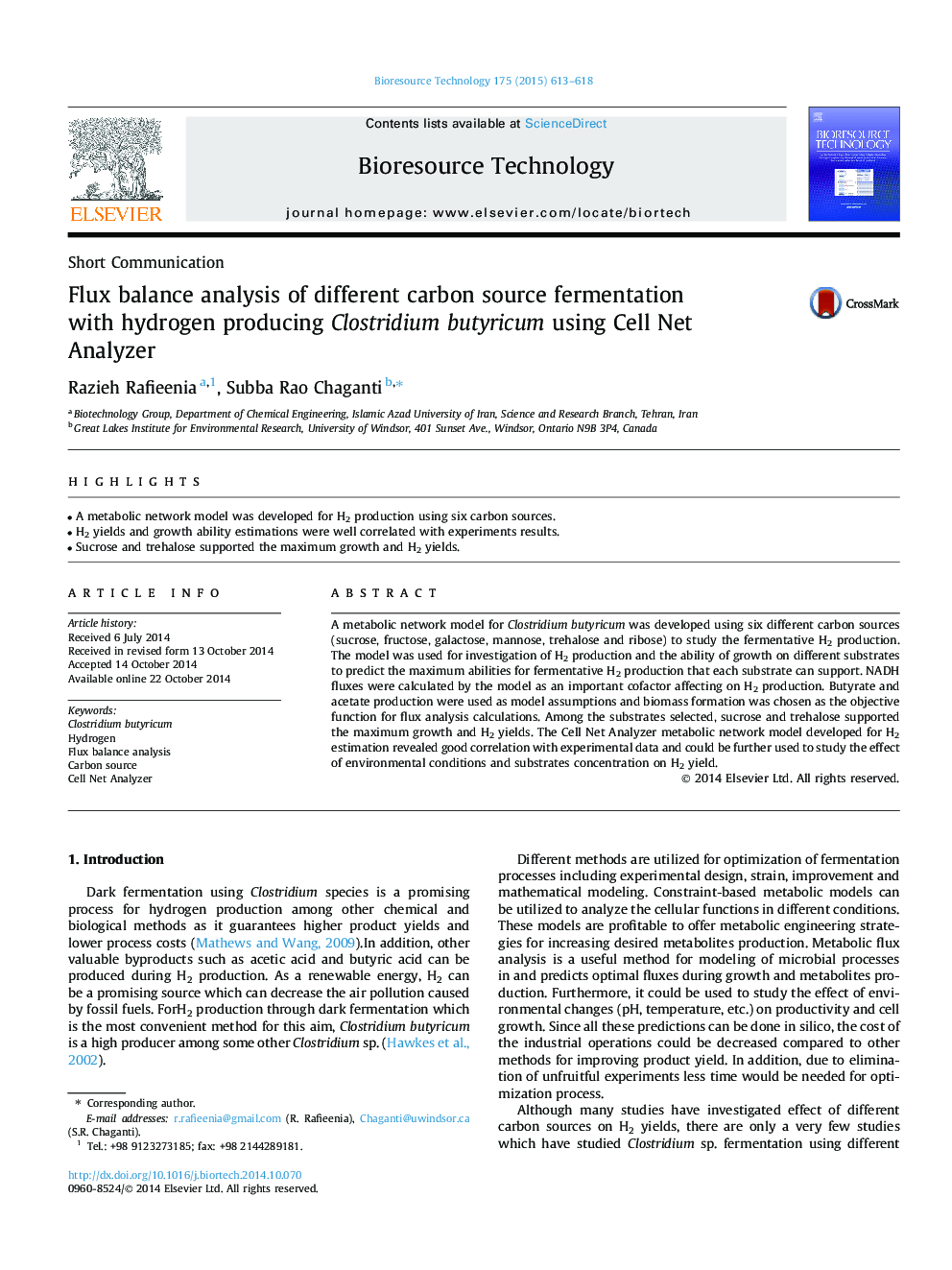| Article ID | Journal | Published Year | Pages | File Type |
|---|---|---|---|---|
| 680333 | Bioresource Technology | 2015 | 6 Pages |
•A metabolic network model was developed for H2 production using six carbon sources.•H2 yields and growth ability estimations were well correlated with experiments results.•Sucrose and trehalose supported the maximum growth and H2 yields.
A metabolic network model for Clostridium butyricum was developed using six different carbon sources (sucrose, fructose, galactose, mannose, trehalose and ribose) to study the fermentative H2 production. The model was used for investigation of H2 production and the ability of growth on different substrates to predict the maximum abilities for fermentative H2 production that each substrate can support. NADH fluxes were calculated by the model as an important cofactor affecting on H2 production. Butyrate and acetate production were used as model assumptions and biomass formation was chosen as the objective function for flux analysis calculations. Among the substrates selected, sucrose and trehalose supported the maximum growth and H2 yields. The Cell Net Analyzer metabolic network model developed for H2 estimation revealed good correlation with experimental data and could be further used to study the effect of environmental conditions and substrates concentration on H2 yield.
